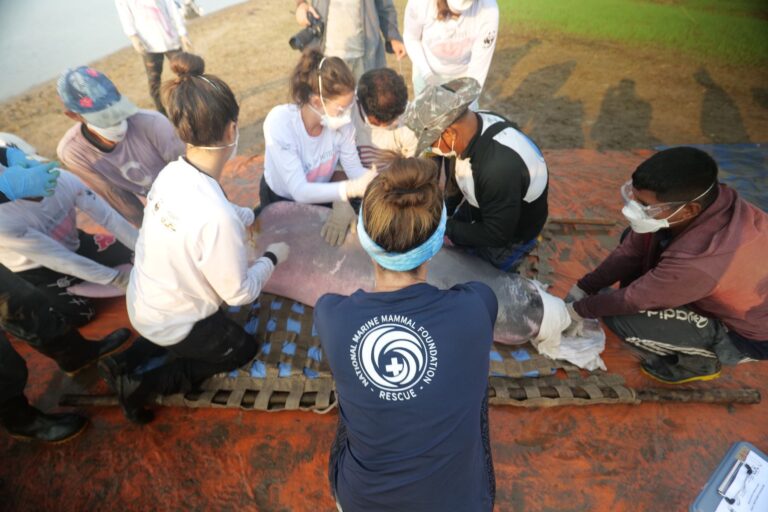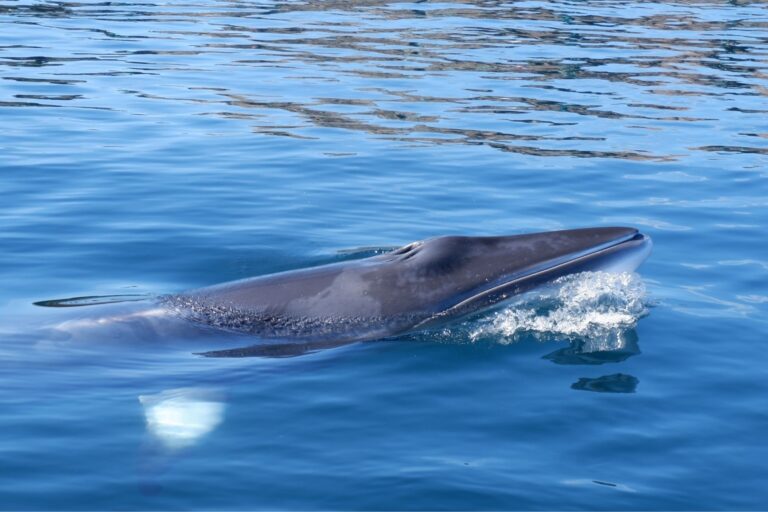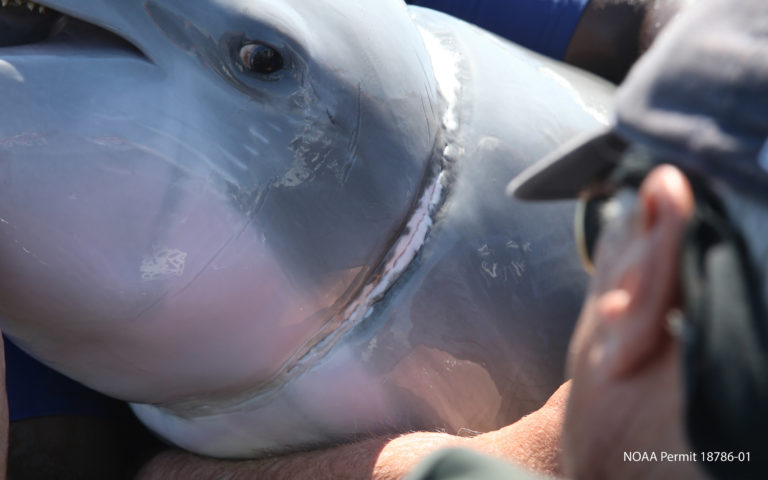Dorian Houser, Director of Biologic and Bioacoustic Research recalls his trip to the Amazon to listen in for elusive marine mammal species.
Not long ago I returned from a trip to the Amazon. What an amazing place! The Amazon holds on to so much of what the natural world once was. The forest thrives with life and the river teams with creatures, some of which appear as holdovers of prehistoric times.
The river is massive and ranges across South America, starting in the mountains of Peru and ending at the Atlantic Ocean. My trip took me to the middle of Brazil, about a 90 minute boat ride from Tefé, a city in the state of Amazonas that can only be reached by boat or airplane.

I was in the Amazon to investigate ways that the National Marine Mammal Foundation (NMMF) could help protect the boto and tucuxi, two dolphin species that inhabit the fresh waters of the Amazon River. The boto (Inia geoffrensis), also called the Amazon River dolphin, belongs to one of several families of river dolphin, all of which are considered either endangered or vulnerable by the International Union for Conservation of Nature (IUCN).
The boto is an odd creature, being pink but often with brownish spots along its body, and possibly represents the most ancient of dolphin species. It even looks a bit prehistoric, with a long thin snout that it uses to forage in the naturally cluttered river. On the other hand, the tucuxi (Sotalia fluviatilis), is a smaller species of dolphin that looks similar to the bottlenose dolphin (think Flipper) that most of us are familiar with.
The IUCN classifies the tucuxi as “data deficient,” meaning the IUCN simply does not have sufficient information about the species to determine its population status (growing, declining, or stable) and whether it is a species of concern (either endangered or vulnerable). However, both the boto and tucuxi face numerous challenges to their survival and population sustainability, including exposure to mercury and other pollutants from mining and industry, and habitat encroachment due to commercial and residential development. In addition, the boto is hunted along some parts of the Amazon River so that its meat can be used as fishing bait.


My excursions along the Amazon River were based out of the Uakari Lodge, which is an eco-tourist facility located in the Mamirauá Reserve. I partnered with a local guide, as well as my scientific colleague, Michel André, who is the director of the Laboratory of Applied Bioacoustics at the Technical University of Catalonia.
Both the boto and tucuxi face numerous challenges to their survival and population sustainability.
As a first step in trying to improve conservation efforts for the boto and tucuxi, the NMMF has partnered with Dr. André to place an acoustic recorder in the waters of the Amazon where the boto is known to frequent. The NMMF funded node continuously “listens” for the sounds produced by the boto, including echolocation signals (clicks) and “squawks” produced by the species, but it is also capable of detecting the clicks and whistles produced by the tucuxi.
The recordings are used to determine the times of the year that these dolphin species use particular locations in the river. The information is critical to species conservation by helping identify important habitats to the animals, such as foraging or nursery grounds, or other areas that should be protected from degradation by human activity.
The information is critical to species conservation by helping identify important habitats to the animals.
The deployment of the acoustic recorder is the first step in what will hopefully be a much larger effort – the placement of recorders throughout the Amazon. The use of multiple recorders allows more sophisticated analyses to be conducted so that not only habitat use can be determined, but possibly estimates of the size of boto and tucxi populations.
This work, which builds on the efforts of Dr. André to monitor wildlife biodiversity, will provide essential information to characterizing the population status of the boto and tucuxi, and will enable workable and effective conservation policies and practices related to this species to be developed.
My trip to the Amazon was much shorter than I would have liked it to be, but I hope to go back soon. Next time, the plan is to be equipped with many more nodes so we can continue to build on the effort’s modest beginnings. Will you help? If you have a love of marine mammals and care for the impact that humans are having on them, please consider supporting our efforts.
The Chinese river dolphin, the baiji, has gone extinct within the last 15 years. The vaquita, a small porpoise only found in Baja California, is on the verge of extinction with an estimated population of less than 12 individuals. Both are a result of human activity. Let’s not let the boto and tucuxi suffer the same fate. Let’s act now before it is too late!





